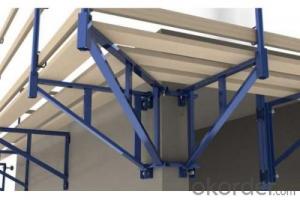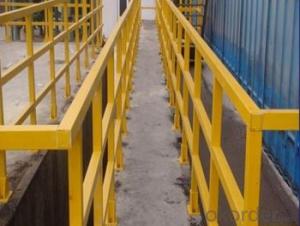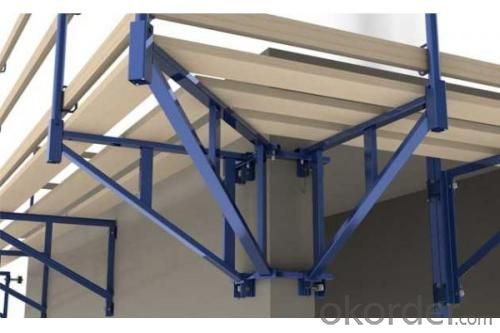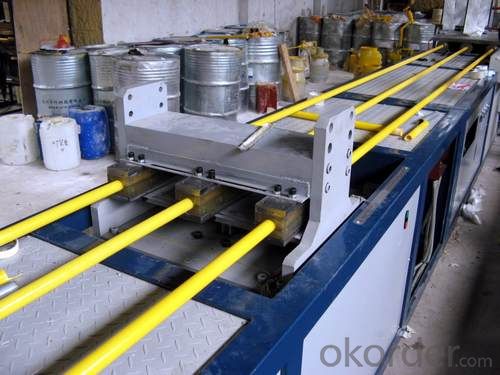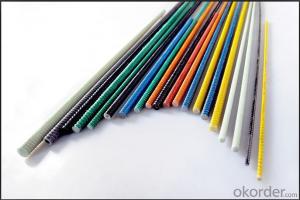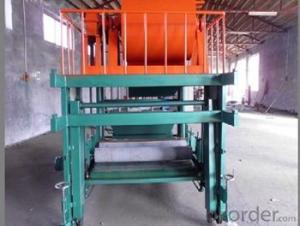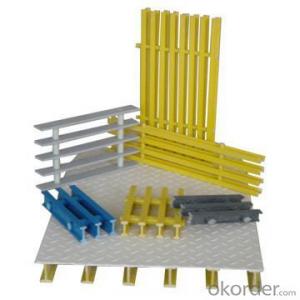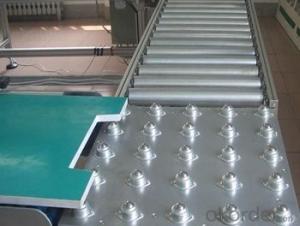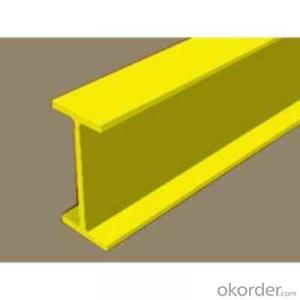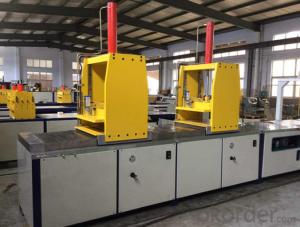Anti-Ageing FRP Pultrusion Profiles - Pultruded Gratings and Pultrusion Process
- Loading Port:
- Tianjin
- Payment Terms:
- TT OR LC
- Min Order Qty:
- 4000 m.t.
- Supply Capability:
- 50000 m.t./month
OKorder Service Pledge
OKorder Financial Service
You Might Also Like
Specification
PRODUCT DESCRIPTION
Pultruded grating is made by a particular assembly process, which using “I” shape as its main load-bearing and special rod to go through the bearing bar. Pultruded grating include the standard grating and the custom grating, the custom grating can be designed to meet customer’s requirement or special using condition by changing the shape, size and space of the bearing bars, the surface can be covered with lozenge panel, grit panel, or added the anti-slippery sand directly.
FRP pultruded grating has the most characteristics of molded grating, but it has its distinct advantages, it has very high fiberglass content in the loading direction, so it has very high load capability, it has more superiority when used at wide span, so that the basic support will be decreased and the project cost will be reduced accordingly.
SPECIFICATION
The standard space between two crossbars is 6 inch or 12 inch.
Thickness (mm) | Bar width (mm) | Open space (mm) | Open rate (%) | Approx weight (kg/m |
25.4 | 15.2 | 22.8 | 60 | 13.2 |
25.4 | 15.2 | 15.2 | 50 | 15.9 |
25.4 | 15.2 | 10.1 | 40 | 18.5 |
25.4 | 40 | 10.8 | 21 | 14.5 |
38.1 | 15.2 | 22.8 | 60 | 15.8 |
38.1 | 15.2 | 15.2 | 50 | 19.1 |
38.1 | 15.2 | 10.1 | 40 | 22.4 |
50.8 | 25.4 | 25.4 | 50 | 16.6 |
50.8 | 25.4 | 12.7 | 33 | 21.1 |
CHOICE FOR PULTRUDED GRATING
Resin: GP resin, ISO resin, VE resin, Phenolic resin
Color choice: Yellow, gray, green, custom color
Surface choice: Groove surface, grit surface, lozenge cover surface
FEATURES
a. Anti-corrosion and anti-rust
b. Light weight and high strength
c. Anti-flammable
d. Anti- fatigue
e. Safe and anti-slippery
f. Anti-ageing
g. Easy of maintenance
h. Excellent electromagnetism property
i. Good economic benefit
FIELDS SERVED
Sewage treatment,
water supply and drainage,
chemical industry,
oil industry,
power engineering.
APPLICATION
Operation terrace,
stair walkway,
ground floor,
trench cover,
sidewalk,
foot bridge,
equipment safety fence,
scaffold.
COMPANT DESCRIPTION
CNBM,China National Building Materials Group is a state-owned enterprise in charge of administrative affairs in china building materials industry. Established in 1984, CNBM is a large group corporation of building materials with total assets of 25 billion RMB and a total staff of 30,000.CNBM now owns 200 subordinating firms of solely owned and joint-venture companies.
PACKAGING & DELIVERY
1.Packaging Details:
standard packing or your requirement
2.Delivery Detail:
Shipped in 30 days after payment
FAQ
1.Q:Are you factory or trading company ?
A:We are Factory produce FRP machines and FRP products.
2.Q:If can customized by customers requirements?
A:yes,we can produce the machine with customized size.
3.Q:How about the payment?
A:We accept any kind of payment.
4.Q:What is the guarantee?
A:Gurantee is one year.
5.Q:If you can training?
A:yes ,we can training in our factory also can send engineers to your factory training.
PICTURES
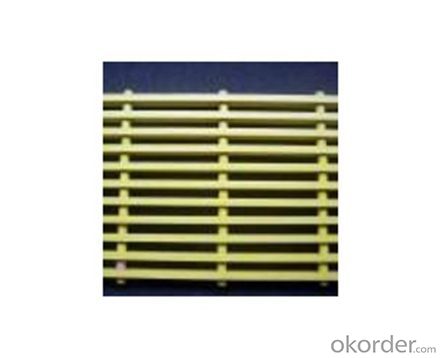

- Q: Can FRP pultrusion profiles be used in the construction of wind turbine blades?
- Yes, FRP (Fiber Reinforced Plastic) pultrusion profiles can be used in the construction of wind turbine blades. These profiles offer high strength-to-weight ratio, excellent corrosion resistance, and can be custom-designed to meet the specific requirements of wind turbine blade construction. Additionally, FRP pultrusion profiles provide flexibility in design and can withstand the demanding conditions of wind turbine operation, making them a suitable choice for blade construction.
- Q: Can FRP pultrusion profiles be used in chemical storage tanks?
- Yes, FRP (Fiber Reinforced Polymer) pultrusion profiles can be used in chemical storage tanks. FRP pultrusion profiles are known for their excellent corrosion resistance, making them suitable for storing a wide range of chemicals. They are also lightweight, strong, and have a high strength-to-weight ratio, which makes them an ideal choice for constructing durable and long-lasting chemical storage tanks. Additionally, FRP pultrusion profiles can be customized to meet specific design requirements, allowing for flexibility in tank design and construction. Overall, FRP pultrusion profiles are a reliable and cost-effective option for chemical storage tanks due to their corrosion resistance, strength, and customization capabilities.
- Q: Can FRP pultrusion profiles be used in agricultural applications?
- Yes, FRP pultrusion profiles can be used in agricultural applications. FRP (Fiber Reinforced Polymer) pultrusion profiles are known for their high strength-to-weight ratio, corrosion resistance, and durability, making them suitable for various agricultural applications. One common use of FRP pultrusion profiles in agriculture is in the construction of livestock enclosures such as fences, gates, and pens. These profiles offer excellent resistance to weathering, chemicals, and UV degradation, ensuring long-lasting performance in outdoor environments. Additionally, their lightweight nature makes them easy to handle and install. FRP pultrusion profiles are also used in the manufacturing of agricultural equipment and machinery. They can be utilized for structural components, such as beams and supports, as well as for functional parts like handles, brackets, and covers. The high strength of FRP profiles allows them to withstand heavy loads and harsh operating conditions, while their corrosion resistance ensures longevity in corrosive environments such as fertilizer storage areas or livestock waste management systems. Furthermore, FRP pultrusion profiles can be used for irrigation systems in agriculture. Their non-conductive nature makes them ideal for applications where electrical insulation is required, such as in the construction of irrigation pipes or channels. Additionally, the corrosion resistance of FRP profiles ensures that they can withstand exposure to water, chemicals, and fertilizers commonly used in agricultural irrigation. In summary, FRP pultrusion profiles are well-suited for agricultural applications due to their high strength, corrosion resistance, and durability. Whether it is for livestock enclosures, agricultural machinery, or irrigation systems, FRP profiles offer several advantages that make them a reliable choice in the agricultural industry.
- Q: Are FRP pultrusion profiles resistant to impact and vibration?
- FRP pultrusion profiles possess a high level of resistance to impact and vibration, thanks to their composition and manufacturing process. These profiles are inherently durable and strong due to the combination of resins and fibers used. The fibers, commonly glass or carbon, contribute to their excellent tensile strength, while the resin matrix adds toughness and impact resistance. The unique composition of FRP pultrusion profiles allows them to absorb energy effectively, enabling them to withstand impacts without significant deformation or damage. This quality makes them well-suited for applications that necessitate impact resistance, such as construction, transportation, and infrastructure projects. Furthermore, FRP pultrusion profiles exhibit exceptional vibration resistance. The composite material's inherent damping characteristics help disperse and dampen vibrations, minimizing the risk of structural fatigue and increasing the profiles' lifespan. This makes them ideal for use in environments with heightened vibration levels, including industrial machinery, bridges, and marine structures. Nevertheless, it is crucial to consider that the impact and vibration resistance of FRP pultrusion profiles may vary based on factors such as resin type, reinforcement fibers, and profile design. Thus, it is advisable to consult the manufacturer or supplier to ensure that the chosen FRP pultrusion profiles fulfill the specific impact and vibration resistance requirements of the intended application.
- Q: What are the circumstances in which the pultrusion should be performed?
- The roving yarn assembly in yarn frame, yarn unwinding through a series of guide roller and cluster grid plate, roller set, enter the resin impregnated resin impregnated yarn groove. Then through the pre forming die, the die is required according to the shape of products and configuration in the guiding device. The mold after discharge excess resin and bubbles into the cold. Cold mold cooling by cooling water, so that the resin viscosity, reduce the loss, and finally into the mold, the fiber reinforced material and resin molding in mold curing, and then the traction device is pulled, cut into required length of products by cutting device.
- Q: Are FRP pultrusion profiles resistant to sulfuric acid?
- FRP pultrusion profiles display a notable resistance to sulfuric acid and this corrosion resistance is a key advantage they hold over traditional materials like steel or concrete. Sulfuric acid, known for its highly corrosive nature, poses no threat to FRP pultrusion profiles due to the inherent properties of the composite materials used in their construction. The primary reason behind the corrosion resistance of FRP profiles lies in the resin matrix that encases the reinforcing fibers. The commonly utilized resins in pultrusion, namely polyester, vinyl ester, and epoxy, exhibit remarkable chemical resistance, including resistance to sulfuric acid. However, it is essential to acknowledge that the resistance of FRP pultrusion profiles to sulfuric acid can vary based on multiple factors. The concentration and temperature of the acid, as well as the specific resin formulation employed in the profile, can impact the overall resistance. In scenarios involving highly concentrated acid or elevated temperatures, it is advisable to consult the manufacturer or supplier to ensure that the specific FRP profile meets the necessary resistance requirements. On the whole, FRP pultrusion profiles offer a high level of resistance to sulfuric acid, making them apt for a wide range of applications in industries where this corrosive substance may be present, such as chemical processing, wastewater treatment, or mining.
- Q: Can FRP pultrusion profiles be used in the oil and gas industry?
- Yes, FRP (Fiber Reinforced Polymer) pultrusion profiles can be used in the oil and gas industry. FRP pultrusion profiles offer several advantages that make them suitable for applications in this industry. Firstly, FRP pultrusion profiles are corrosion-resistant. They do not rust, corrode, or degrade when exposed to harsh environments, such as saltwater, chemicals, and extreme temperatures. This makes them ideal for use in offshore platforms, pipelines, and other oil and gas facilities where corrosion can be a significant issue. Secondly, FRP pultrusion profiles have high strength-to-weight ratio. They are lightweight yet extremely strong, allowing for efficient installation, transportation, and handling. This is particularly beneficial in the oil and gas industry, where weight reduction is a crucial factor in improving operational efficiency and reducing costs. Thirdly, FRP pultrusion profiles can be customized to meet specific requirements. They can be manufactured in various shapes, sizes, and configurations, making them versatile for different applications in the oil and gas industry. Whether it is for structural supports, grating, handrails, or other components, FRP pultrusion profiles can be tailored to fit the specific needs of each project. Furthermore, FRP pultrusion profiles offer excellent electrical insulation properties. This is important in the oil and gas industry, where electrical safety is paramount. FRP profiles can provide insulation and prevent electrical conductivity, reducing the risk of accidents and ensuring the safety of personnel and equipment. Overall, FRP pultrusion profiles have proven to be reliable, durable, and cost-effective solutions for various applications in the oil and gas industry. Their corrosion resistance, high strength-to-weight ratio, customization capabilities, and electrical insulation properties make them an attractive choice for this demanding industry.
- Q: What are the typical load-bearing capacities of FRP pultrusion profiles?
- FRP pultrusion profiles display varying load-bearing capacities depending on multiple factors including profile design, fiber type, fiber quality, and manufacturing process. Despite this variability, FRP pultrusion profiles generally possess high strength-to-weight ratios and can support substantial loads. Load-bearing capacities can range from a few hundred pounds to several thousand pounds, contingent upon profile size and cross-sectional shape. For instance, smaller rectangular or square FRP pultrusion profiles may bear loads between 500 and 2,000 pounds, while larger profiles with more intricate shapes like I-beams or channels can sustain loads exceeding 5,000 pounds or more. It is important to acknowledge that the load-bearing capacities of FRP pultrusion profiles can be influenced by external factors such as temperature, environmental conditions, and the use of additional reinforcement or support structures. Therefore, it is essential to consult with FRP pultrusion manufacturers or specialized engineers to obtain accurate and specific load-bearing capacity information for a particular application.
- Q: Can FRP pultrusion profiles be used in the construction of swimming pool enclosures?
- Swimming pool enclosures can make use of FRP pultrusion profiles, which are known for their excellent strength-to-weight ratio, corrosion resistance, and durability. This makes them an ideal choice for outdoor applications like swimming pool enclosures. To manufacture FRP pultrusion profiles, fiberglass rovings are pulled through a resin bath and then through a heated die. This results in a continuous profile of uniform shape and strength. This manufacturing process ensures that the profiles are strong, stiff, and lightweight, making them easy to handle and install. In the construction of swimming pool enclosures, FRP pultrusion profiles can be utilized for various structural elements such as beams, columns, trusses, and panels. These profiles provide the necessary strength and support, while also offering resistance to corrosion, moisture, and UV radiation, which are common challenges in a swimming pool environment. Furthermore, FRP pultrusion profiles can be customized to meet specific design requirements, allowing for flexibility in creating unique and aesthetically pleasing swimming pool enclosures. They can be fabricated in different shapes, sizes, and colors, enabling the desired architectural look and feel. Overall, FRP pultrusion profiles offer a reliable and long-lasting solution for constructing swimming pool enclosures. They provide the necessary strength, durability, and resistance to environmental factors. Additionally, their lightweight nature simplifies handling and installation, ultimately reducing construction time and costs.
- Q: Are FRP pultrusion profiles resistant to seismic activity?
- FRP (Fiber Reinforced Polymer) pultrusion profiles are known for their high strength-to-weight ratio and excellent mechanical properties. However, when it comes to seismic activity, their resistance depends on various factors. In general, FRP pultrusion profiles can exhibit good resistance to seismic activity due to their inherent properties. The composite materials used in their construction, such as fiberglass and resin, offer high tensile strength and stiffness, making them capable of withstanding dynamic loads caused by earthquakes. Moreover, FRP pultrusion profiles have been extensively tested and proven to possess excellent fatigue resistance. This property is crucial during seismic events as structures are subjected to repeated dynamic loading. The ability of FRP profiles to withstand cyclic loading without suffering from fatigue failure significantly enhances their seismic resistance compared to traditional materials like steel or concrete. Another advantage of FRP pultrusion profiles in seismic activity is their lightweight nature. Their low weight reduces the overall mass of the structure, resulting in lower seismic forces. This weight reduction can lead to reduced seismic responses and less damage during an earthquake. However, it is important to note that the seismic resistance of FRP pultrusion profiles can be influenced by various factors. These include the design and quality of the profiles, the connection details, and the overall structural system in which they are used. Proper engineering and design considerations must be taken into account to ensure optimal performance and seismic resistance. In conclusion, FRP pultrusion profiles have the potential to offer good resistance to seismic activity due to their high strength, stiffness, and fatigue resistance. However, their performance in seismic events depends on various factors, and careful design and engineering practices are essential to maximize their seismic resistance.
Send your message to us
Anti-Ageing FRP Pultrusion Profiles - Pultruded Gratings and Pultrusion Process
- Loading Port:
- Tianjin
- Payment Terms:
- TT OR LC
- Min Order Qty:
- 4000 m.t.
- Supply Capability:
- 50000 m.t./month
OKorder Service Pledge
OKorder Financial Service
Similar products
Hot products
Hot Searches
Related keywords
